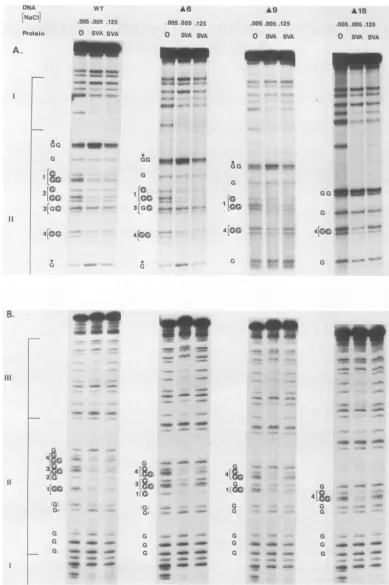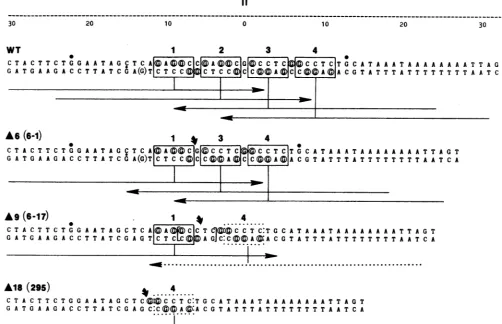Binding of simian virus 40 a protein to DNA with deletions at the origin of replication.
Full text
Figure



Related documents
It was decided that with the presence of such significant red flag signs that she should undergo advanced imaging, in this case an MRI, that revealed an underlying malignancy, which
Intervention effects with respect to ‘ PTA ’ , ‘ INFO ’ , ‘ SAFED ’ , clinical patient outcomes, and health-related quality of life were estimated using general- ised
/ L, and a different adsorbent mass, is shown in Figure 5. The results obtained show that the removal rate increases quickly at first, until a time of 60 min, and
Since NCBI Viral Genomes contained only a small number endogenous nonretrovi- ral, endogenous retroviral, and LTR retrotransposon sequences, we further determined the extent to
Time changing nature of pediatric practice imas been further illustrated in a recent article on time types of cases seen in practice oven the past 25 years.3 This report indicates
3: The effect of PTU-exposure (1.5, 3, and 6 ppm) and levothyroxine therapy (Hypo 6 ppm + Levo) on the distance moved (A) and the escape latency (B) of the male
19% serve a county. Fourteen per cent of the centers provide service for adjoining states in addition to the states in which they are located; usually these adjoining states have